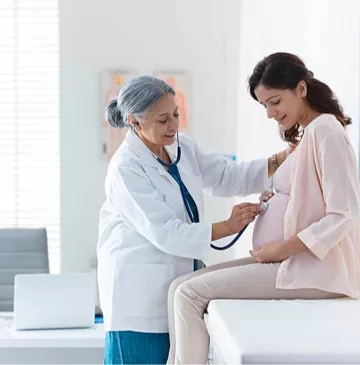Synopsis
Whenever we come across women with low ovarian reserve, there are numerous questions that arise in the minds of an IVF specialist. Click below to read more.
Epilogue – low ovarian reserve
Whenever we come across women with low ovarian reserve, there are numerous questions which arise in the minds of an IVF specialist.
What could be the best IVF protocol for diminished ovarian reserve?
Or is there any best IVF protocol for poor responders?
Or Are there any best fertility clinics for women with low ovarian reserve?
Or what is the best IVF protocol for women with low ovarian reserve?
What are the IVF success rates for women with low ovarian reserve or poor ovarian reserve?
Such queries are quite common for both patients and IVF specialists alike. Hence to address such issues, we at Indira IVF have collated one of the best IVF protocols for women with low ovarian reserve. If you have any query related to IVF protocols kindly request a call back at
+18003092323.
Here we will be reviewing the different IVF protocols for low ovarian reserve women and assess the efficacy of different ovarian stimulation protocols. However if you feel the need to speak to an IVF specialist you can book an appointment with us.
There is an absence of distinct as well as a consistent description of the poor responders such as large-scale randomized scientific studies creates data understanding quite challenging for accurate conclusions.
Introduction – Low Ovarian Reserve Treatment
Dr. Akansha Allahabadiya (Infertility and IVF specialist, INDIRA IVF) explained, “The common objective of most IVF treatments is the improvement in the IVF success rates in low ovarian reserve women or otherwise. Within the past many years, inception of best protocol for diminished ovarian reserve have played a part in the achievements of assisted reproduction techniques, in vitro fertilization (IVF) together with embryo-transfer (ET). The effectiveness of such methods depends upon a customized procedure of controlled ovarian hyper stimulation (COH) and also satisfactory oocyte or egg recruitment”.
The reaction of numerous patients to stimulus protocols employed each time for diminished ovarian reserve is not at all times as expected. Inability to react effectively to traditional protocols also to select enough follicles is known as ‘poor response’ and then end up in reducing oocyte or egg generation, cycle cancellation and also all round, reduced pregnancy rates. Poor response to ovarian stimulus introduction has become an instance of a poor anticipated result. It is vital to be prepared to find the patients who can get a poor reaction and then recommend her correctly, so the patients along with the physician make the correct decisions and also customize the stimulation protocol.
The interpretation of ladies with poor ovarian reserve depends upon the particular IVF centers.
Poor ovarian reserve corresponds to the most popular etiological element
[1]. Even though it is interlinked with the maternal period, it is also seen in younger ladies and then could be connected with enhanced endometriosis or even past ovarian surgical treatment
[2]. The latest research has shown, that poor ovarian reserve is an initial warning of ovarian aging (premature ovarian failure or perhaps early menopause)
[3]. The oocytes received at egg retrieval tend to be sub-optimal.
For the patient bearing poor ovarian response brings about plenty of emotional stress, enhances expense due to the improved of the tries as well as some IVF plans can decline to take such patients, motivating these people into oocyte donation or even adoption.
Problems in assessing ladies with the Poor ovarian response
Regrettably, ladies with considerably lower ovarian reserve differ considerably. The numerous developed follicles along with the variety of oocytes retrieved after a regular stimulus protocol are the primary requirements. The suggested amount differs among experts and then varies from fewer than 3 to lower than 5 predominant follicles on the day of hCG use and/or lower than 3 to under 5 retrieved oocytes.
An older patient’s age group (≥40 years), one or more cancelled IVF process, a higher quantity of hMG or perhaps FSH ampoules utilized (>44) or enhanced doses (>300 IU/day) gonadotropin utilized.
Diminished serum levels of the antimullerian hormone are interlinked with the number of antral follicles as well as age. Various sonographic laboratory tests also have been suggested like predictive medical tests for a poor ovarian response. Diminished ovarian quantity, reduced antral follicle number, considerably diminished ovarian stromal blood circulation are some of them that offer much better information for the ovarian level. No useful laboratory tests are present for forecasting a favorable result.
The loss of a consistent description for ladies with the poor ovarian response is among the problems to examine stimulus protocols and also compare and contrast results. One other issue in assessing the literary works is the study design. Ladies with low ovarian reserves and ivf are not a uniform set and then every individual might have another reason for low ovarian reserve.
Some IVF protocols for low ovarian reserve women are utilized to enhance their reaction. Even though the optimum protocol has not yet been described, reproductive professionals have got numerous choices at their disposal. During this research, we display all the procedures which are employed as a remedy for women with a poor ovarian response as well as the efficiency of numerous controlled hyperstimulation (COH) programs, concentrating in the offering.
IVF protocols for low ovarian reserve women:
Dr Kishor Kawad (Laparoscopy and IVF specialist, INDIRA IVF, AHMEDABAD) shared, “the various IVF protocols for low ovarian reserve with their final results:
1.Higher doses of gonadotropins
Undoubtedly, a rational strategy to address patients having poor ovarian reserve who are unable to react to standard gonadotropin doses will be to raise the daily and full dosage of gonadotropins.
However, even though IVF protocols for low ovarian reserve women utilize higher gonadotropin dosages (usually 300–450 IU/day), succeeding scientific studies failed to cater to any specific gain from this process.
2.The application of recombinant FSH (r FSH)
Numerous scientific studies preferred the usage of rFSH about oocyte maturation, multiple developed oocytes retrieved, many good quality embryos as well as maternity rates.
Research of Drakakis together with colleagues revealed that a gonadotropin with a reduced amount, like hMG, can be used in intracytoplasmic sperm injection (ICSI) without disturbing the result unfavorably.
3.Luteal start of FSH
One more alternate method is the start of FSH use in the delayed luteal stage for improving follicular recruitment in women having a poor ovarian response in their past.
It is famous that strong, small antral follicles can be found in the delayed follicular stage and also their additional growth happens under the action of the premenstrual FSH increase. Prior intake of FSH may enhance the number of selected follicles by opening up the recruitment window in the delayed luteal stage of the preliminary cycle.
4.The usage of LH
The necessary and optimum dosage of LH to attain conception in assisted reproduction has not been identified so far. Amounts of <1.5 IU/L are inadequate to sustain the aromatase process as well as E2 generation.
Also, lower ovulatory quantities (<3 IU/L) in patients going through IVF are connected with reduced fertilization in addition to amplified premature conception loss.
Smaller doses of LH if applied early on in ovarian stimulus in IVF-ET cycles get a favorable result on quality of oocytes, an undeniable fact essential, particularly in situations wherein some embryos are found for transfer.
5.Adjunctive usage of growth hormone (GH)
An alternate idea to the usage of gonadotropins is supplementing it with growth hormone (GH) or even growth hormone-releasing hormone (GH-RH).
GH appears to induce ovarian steroidogenesis, follicular growth and also increases the ovarian reaction to FSH. GH modulates the activity of FSH on granulose cellular material by up-regulating the local synthesis of insulin-like growth factor (IGF-I).
The IGF-I works in synergy with FSH, growing their influence on granulose as well as theca cells. The standard GH dosage utilized in various scientific studies was 4 to 12 IU sc, beginning on the day of ovarian stimulus with gonadotropins.
Preliminary results were motivating for smaller groups of women with the low ovarian response, showing an increased number of oocytes obtained and also enhanced conception rates.
6.The luteal beginning of GnRHa
Another IVF protocol for low ovarian reserve women is identified using lower doses of Gn RH agonists (0.1–1 μg) starting in the mid-luteal stage of the pattern and then resulting during the time of menses or perhaps soon after that, in tandem with higher doses of gonadotropins. By doing this, the decreased impact of the Gn RH agonists on their ovarian receptors leads to lowered ovarian suppression also in improved ovarian reaction. The consumption of GnRH–a throughout the mid-luteal stage to attain preliminary pituitary gonadotropin down-regulation has been utilized in women with poor ovarian reserve. Enhanced oocyte yields, as well as conception rates, were present in sizable nonrandomized sequence.
7.Stop GnRHa protocols
Some IVF protocol for low ovarian reserve women is stopping Gn RH-a when pituitary suppression has happened and start of ovarian stimulus with hMG or rFSH. About these two potential randomized regulated tests, no statistical development in conception rates or in termination rates was discovered.
8.GnRH antagonists programs (GnRH – ant)
The utilization of GnRH antagonists provided fresh hope to the handling weak responders.
The consumption of Gn RH antagonists goals to prevent the early LH rise to use the highest of the ovarian oocyte cohort by minimizing the controlling results of the GnRH-a on the ovarian receptors, removing ovarian suppression at the phase of follicle recruitment.
Early luteinization is substantially lowered at the time of the length of treatment with the antagonist as compared with the period before the beginning of their consumption.
The medical usage of Gn RH-ant offers numerous benefits for the patient, as a shorter period of stimulus, lower doses of gonadotropins, no amplified risk of cyst development with no hormonal abstaining signs and symptoms.
9.Organic cycle
The outcomes of 2 potential scientific studies help the premise that the usually grown follicles of poor ovarian reserve might generate fewer oocytes but yet oocytes of more exceptional quality when compared with their hyperstimulated ovaries. It is distinct that, in women with poor ovarian reserve, natural cycle is outstanding as soon as an oocyte is retrieved and then fertilization, as well as implantation rates, is lot better. It is likely that women with poor ovarian reserve generate the same range of embryos ideal for transfer, with or even without exogenous gonadotropins.
10.Androgen supplements
Increasing the insulin-like growth factor-1 (IGF-1) level and the gonadotropin impact, dehydroepiandrosterone (DHEA) has been utilized two months before ovarian stimulus in patients who earlier had a low reaction. Introductory outcomes were satisfactory. In a contemporary research was looked into the utility of testosterone pretreatment in women with poor ovarian reserve (transdermal usage). Experts claimed which might be one of the best IVF protocol for poor responders having normal basal FSH levels.
Some additional IVF protocol for low ovarian reserve women:
- Use of Letrozole
Latest facts recommend a possible advantageous consequence of aromatase inhibition by the management of Letrozole before gonadotropin stimulus. Letrozole is a very selective, non-steroidal aromatase inhibitor, which was effectively utilized for the introduction of ovulation in ladies with polycystic ovarian syndrome.
Latest information signifies that Letrozole might develop an ovarian response to FSH in women with poor ovarian reserve and even help reduce gonadotropin dosage necessary for stimulus in ladies with unexplained infertility.
- Lower level hCG in initial stimulation stage
The use of 200 IU of hCG every day, along with rFSH, is a secure as well as probably better choice of human recombinant LH supplements for patients going through IVF/ICSI-ET.
The use of 200 IU of hCG every day from days 3–7 throughout the follicular development allows a satisfactory LH stage within this period of ovulation inception. Our outcomes have demonstrated that with hCG we get low amount of gonadotropin ampoules utilized, increased fertilization level, greater implantation level, and good conception rate.
Summary
In spite of many predictive laboratory tests for lowered ovarian reserve, the weak responder is most of the time exposed through ovarian stimulus. The truth that there is no consistent description of the inadequate response can make the medical tests incomparable.
Moreover, a precise forecast of low ovarian response will assist the clinician to utilize the best protocol for diminished ovarian reserve for every patient, reducing the expense along with the emotional decay.
Nevertheless, a craze for a complete development in ovarian response is proven with some protocols. You will find specific findings that offer hope for ameliorating conception rates.
The above treatise gives you a short glimpse about how the different IVF protocols for women with low ovarian reserve works. To have an in depth understanding or getting your specific queries solved you can chat live with us on our website.
Comments
Articles
2023
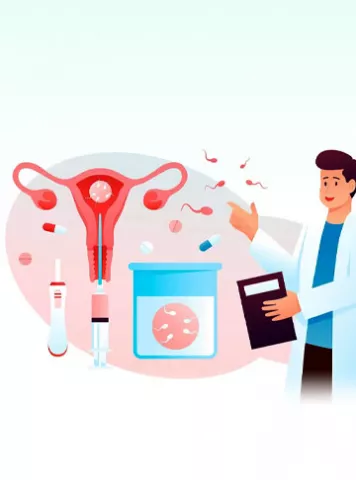

Female Infertility Male Infertility
How many days Sperm Live in Female Body after Intercourse?
While it depends on the correct circumstances and the stage of the woman's men...
2023


What Causes High Estrogen in Women
Estrogen is a very important hormone in a female’s body. It is especially ne...
2022


Female Infertility Infertility Tips
Why do You Need Fertility Treatment
As we all know infertility rate is constantly rising in our society day by day...
2022
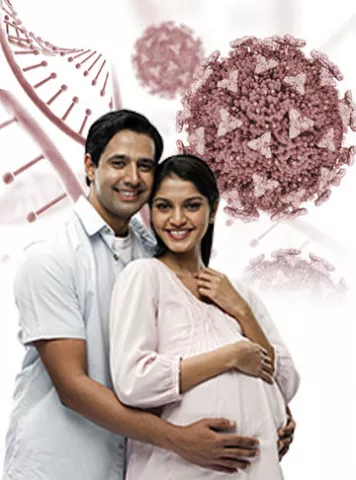

Female Infertility Infertility Tips
The Impact of Covid-19 on Pregnant Women & their Babies
Pregnant women and those in close-contact with them must take necessary precau...
2022
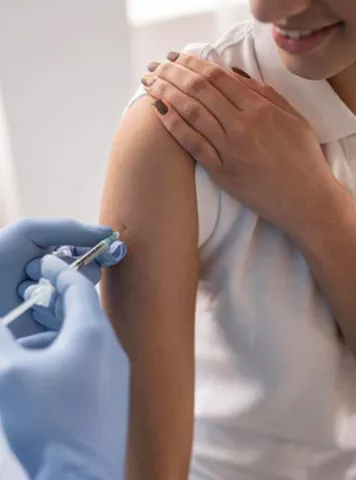

Female Infertility Infertility Tips
Is Covid-19 Vaccination dangerous for pregnant women? Know the Benefits and Risks
What do we know today about the benefits and risks of vaccination in pregnant ...
2022
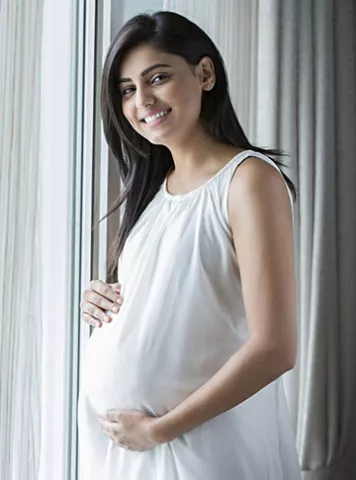

Female Infertility Infertility Tips
What every young woman of today needs to know
A lot of people get themselves examined once or twice a year by their doctor. ...
2022


Female Infertility Infertility Tips
Do Infertile Women Menstruate?
It is a common belief over decades that women with normal menstrual cycle patt...
2022
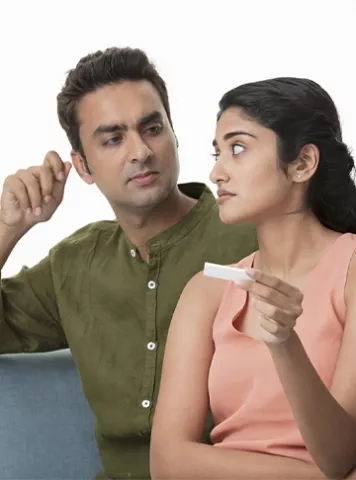

Female Infertility Infertility Tips
We have sexually satisfied life , Still can we be infertile ?
Infertility is inability to conceive after one year or more with regular unprote...
2022


Infertility Tips Female Infertility
Should women go for IVF treatment?
Incidence of infertility in India is 10 to 15%, in other words 27.5 million co...
Tools to help you plan better
Get quick understanding of your fertility cycle and accordingly make a schedule to track it















